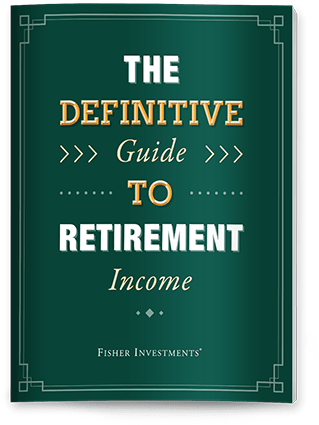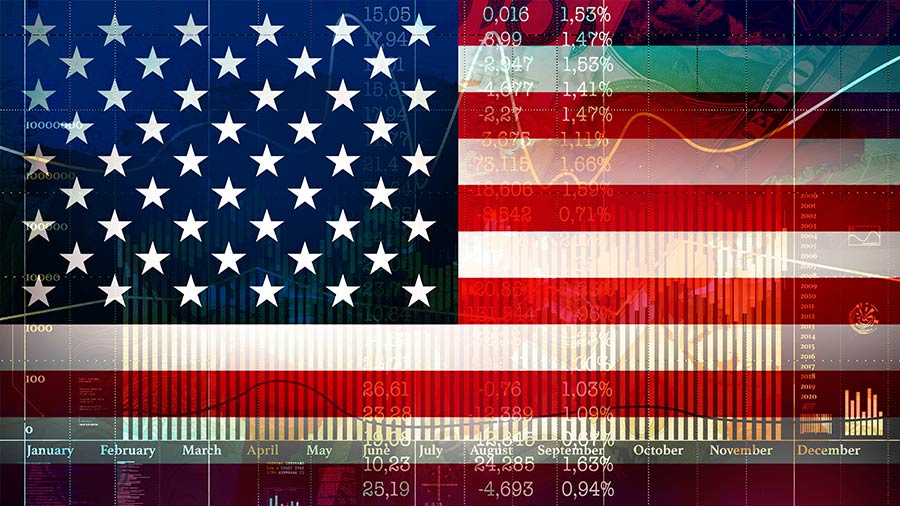Personal Wealth Management / Economics
A Look at the US Economy as Q3 Winds Down
The latest US economic data have plenty of interesting tidbits for investors.
As we round third on 2025, we have a batch of fresh US data to analyze. While most of the findings are backward-looking, we found five interesting takeaways from the latest results, which provide some insight into the year’s popular investment themes.
Lessons From Q2 GDP’s Third Estimate
Official economic data have been under scrutiny this year—largely a political debate we won’t venture into here. Our focus is on the latest US GDP estimate, which reflects more comprehensive information compared to the initial estimate—albeit, at a big lag. Revisions are standard practice for national statistics agencies worldwide, but gathering that data takes time, which is why we get what is often called the “final” Q2 GDP estimate in the waning days of Q3. It isn’t actually “final,” given GDP is continually revised, sometimes years after the fact, as methodology changes. But tradition, we guess.
At any rate, in this third reading, the Bureau of Economic Analysis found GDP grew 3.8% annualized in Q2—up from the second estimate of 3.3% and close to a percentage point higher than the 3.0% advance estimate.[i] Consumer spending (particularly on services) was stronger than estimated. Consumption added 1.7 percentage points (ppts) to GDP overall, with services accounting for 1.2 ppts.[ii]
Exhibit 1: Q2 2025 GDP Estimates

Source: Bureau of Economic Analysis, as of 9/26/2025.
Knowing GDP’s exact growth rate isn’t essential for investing success since stocks pre-price the probable economic realities over the next 3 – 30 months. Nor does GDP necessarily give you all that precise a look at the actual economy’s growth rate, given the complexities involved and weird calculation quirks (e.g., use of net exports). Stocks also have long since moved on from these numbers, but these results can confirm for investors that economic conditions held up better than they may have thought a couple of months ago.
What of AI’s Role in GDP Growth?
The latest GDP estimate also provides some context around artificial intelligence’s (AI’s) contributions, which many think is propping up an otherwise floundering economy. We agree tech spending has been the primary driver of business investment recently, and AI expenditures are a chunk of that. Per the BEA, private fixed investment in information processing equipment and software (an imperfect but representative proxy for AI expenditures) grew 4.6% annualized in Q2 compared to a flat quarter for the rest of business investment.[iii] Since Q1 2020, information processing equipment and software investment has risen nearly 63% through Q2 2025, vastly outpacing nonresidential private fixed investment’s 25% growth over the same period.[iv]
Not all business investment is AI, though. (Exhibit 2) Data center investment is only partly that, and it is a large driver of this trend. Furthermore, as our first point highlighted, GDP growth isn’t solely an AI story.
Exhibit 2: AI Isn’t the Only Source of Business Investment

Source: St. Louis Federal Reserve, as of 9/29/2025.
Tariffs’ Bark Is Worse Than Their Bite
Many observers expected tariffs would inevitably reignite inflation this year. We disagreed with that thesis from the beginning. Firstly, inflation refers to a broad increase across the entire spectrum of prices. Tariffs may make some goods prices higher (e.g., clothing, coffee and cars), but this wasn’t likely to be an economywide phenomenon. Secondly, businesses were also likely to refrain from passing on higher costs to customers right away due to all the tariff-related uncertainty and front-running. So even if some prices did rise, it would take time to show up in the data.
So far, the evidence argues against a return of hot inflation biting consumer spending. Per S&P Global’s September flash purchasing managers’ index (PMI), respondents (particularly in the manufacturing sector) blamed tariffs for higher costs, but they have also held off from raising prices.[v] As the report noted, “Firms across both manufacturing and services often reported difficulties passing higher costs on to customers due to weak demand and growing competition.”[vi] A firm that thinks it lacks pricing power to pass increased costs on may not want to risk losing market share.
As for the actual price data, the PCE Price Index (the Fed’s preferred inflation measure) rose 0.3% m/m in August and averaged a 0.2% monthly gain since April.[vii] That … is in line with the average 0.2% monthly gain over the past 10 years.[viii] Likewise, real consumer spending has grown on a monthly basis in four of the past five months from April through August—there is little sign tariffs have derailed consumers, either.[ix]
A Warning Light From the Auto Industry?
In recent weeks, financial headlines have warned the auto industry is flashing a warning light on the US economic dashboard. Several automakers reported tariffs are squeezing profits, and some dealers are fretting about weaker demand after customers rushed to buy earlier this year to front-run tariffs.[x] We agree the industry is in a soft patch, facing headwinds from tariffs, component shortages and ongoing supply-chain issues. But the data aren’t universally negative. Per the August PCE report, new auto purchases rose the past two months as consumers moved before dealers incorporate tariffs into their 2026 models.[xi]
Looking ahead, the latest durable goods report showed new orders for motor vehicle bodies, parts & trailers rose 1.9% in July (August figures aren’t available yet), extending a bouncy trend.[xii] At least for now, auto demand hasn’t gone off a cliff. Also, car purchases are unlikely to be the swing factor for broader consumer spending, the majority of which is services.
Moods Remained Cool at Summer’s End
The University of Michigan’s (U-Mich’s) widely watched Surveys of Consumers headline index slipped to 55.1 this month after August’s 58.2.[xiii] September was the third-weakest reading of the year, behind only April and May (which both registered a respective reading of 52.2).
Responses based on party lines show Democrats’ feelings about the economy improved somewhat in September while Republicans’ views worsened a tad (though the former were still feeling much more dour than the latter). For reference, respondents who identified as “Independent” also reported feeling down about the economy in September compared to August.[xiv]
Exhibit 3: U-Mich Sentiment Index by Political Party

Source: University of Michigan, as of 9/29/2025.
As we wrote last month, this divide and divergence in responses based on political preference illustrates how fickle and politicized sentiment can be. Respondents are living in the same US economy, but their political views partly shape their economic outlooks. Yet as the aforementioned data suggest, growth hasn’t ceased and people are still shopping aplenty. That ongoing economic resilience amid pessimism has been good enough to boost stocks this year—a useful reminder to keep political views separate from your investment approach.
[i] Source: Bureau of Economic Analysis, as of 9/26/2025.
[ii] Ibid.
[iii] Source: Bureau of Economic Analysis, as of 9/29/2025.
[iv] Ibid.
[v] Source: S&P Global, as of 9/29/2025.
[vi] Ibid.
[vii] Source: FactSet, as of 9/29/2025.
[viii] Ibid.
[ix] Ibid.
[x] “Auto Industry Is Flashing a Warning Sign on U.S. Economy,” Christopher Otts, The Wall Street Journal, 9/25/2025.
[xi] See note iii.
[xii] See note ix.
[xiii] Source: University of Michigan, as of 9/29/2025.
[xiv] Ibid.
If you would like to contact the editors responsible for this article, please message MarketMinder directly.
*The content contained in this article represents only the opinions and viewpoints of the Fisher Investments editorial staff.
Get a weekly roundup of our market insights
Sign up for our weekly e-mail newsletter.

See Our Investment Guides
The world of investing can seem like a giant maze. Fisher Investments has developed several informational and educational guides tackling a variety of investing topics.





